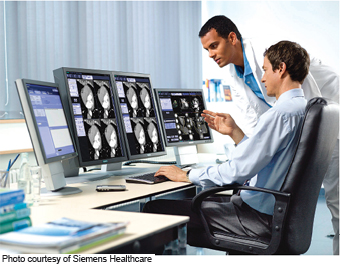
Faced with escalating treatment costs and pressure to be affordable while searching for efficiency and better quality, hospitals are turning towards healthcare IT (HIT) for assistance where patient care is no longer the sole responsibility of doctors and nurses alone. Dr. Pawel Suwinski, principal consultant, Healthcare Practice, Frost & Sullivan, commented that the total recorded revenue of HIT from APAC in 2009 reached an astounding US$ 7.1 billion. The sum is a near 15% contribution to the total revenue figure for the industry globally. "With an estimated steady growth of 11.3% CAGR (2009-2012) and an estimated leap to US$ 10 billion revenue by 2012, it will come as no surprise that the majority of healthcare providers from APAC indicated that they are likely to keep their IT budgets intact, if not increased, despite going through a difficult recession in 2009," says Suwinski. Following a research conducted by Frost & Sullivan on 40 CIO/CFOs from leading hospitals in APAC, 80% reported that they are looking at retaining or increasing their hospital's IT budget for the year. HIT forms a pivotal role in today's healthcare system and extends beyond mere information capturing, storing and management. Being able to access the relevant information at the point of care-on the go-as well as interpret the patient's stored medical data enables medical professionals to take the best course of action on both clinical and management levels. The healthcare industry is still lagging behind other industries in the adoption of information technology. At present, the gap stands at about 5 to 10 years, depending on products and technologies, but it is shrinking fast as HIT adoption and growth rates are outperforming other industries. Improving quality of care, enhancing patient safety and increasing patient satisfaction, while drastically reducing medical errors and administration burden, have become important criteria to most hospitals. This is made possible with the induction of HIT systems in the healthcare delivery environment. Electronic medical records (EMR) are meant to accurately capture patient information to be shared with each member of the hospital team. Beyond that, EMR systems link different healthcare industry stakeholders by enabling seamless flow of patients' medical records from different healthcare providers as well as pertinent insurance and billing information. Medical errors due to illegible notes written by physicians during patient charting are also drastically reduced with implementation of EMR systems. Suwinski comments, "Although APAC countries may be slow adopters in HIT, they are beginning to realise that, in order to compete with their western counterparts strategically, they will need to step up their IT integration to clinical care." Japan and Korea have spent a total of US$ 299 million and 56 million, respectively, on EMR systems within their hospitals. Other hospitals in APAC are also increasing their IT budgets to implement various technology systems to improve clinical service offering to their patients. Suwinski believes that the healthcare model will soon evolve from reactive sick-care concept to more pro-active personalised medicine in the near future. Further, fusion of wellness and illness care, including personalised and traditional medicine, will create the framework for a "cradle-to-tomb" approach in managing someone's health. "Genomics sequencing, personalised drug treatment and self-diagnosis will be the way forward for healthcare globally, and APAC is no exception to this," Suwinski says. There is no doubt that for such healthcare vision to become a reality, physicians must accept changes in the way they operate and embrace new technology and market demands within their workplace. Physicians' buy-in to technology is the first step in creating a domino effect in the industry that will ultimately pNike

 iConnectHub
iConnectHub
 Login/Register
Login/Register Supplier Login
Supplier Login


























